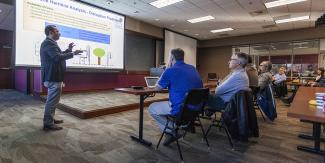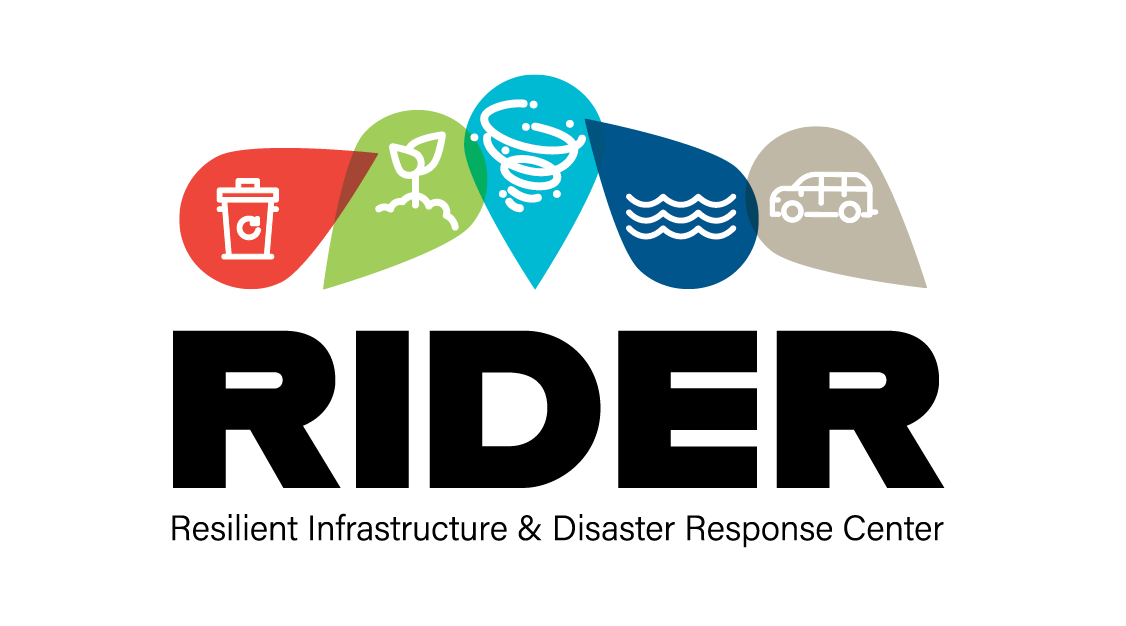
Ozguven talks to experts with FSU’s Center for Advanced Power Systems about Hurricane Hermione and how the storm disrupted the electrical power in Florida’s Big Bend.
ISL Faculty Affiliate leads new RIDER Center to help communities plan and prepare for disasters
In Florida, we have crazy weather. We’ve learned to hunker down or evacuate, but both can pose challenges for older adults. Now a Faculty Affiliate of the Institute for Successful Longevity is leading a new research center developing better ways for communities to plan, to prepare and to react to weather events and other threats in ways that accommodate the needs of older people and all populations.
With his new Resilient Infrastructure and Disaster Response (RIDER) Center, Eren Erman Ozguven, Ph.D., will research better ways for communities in Florida and other vulnerable states to plan for and recover from disasters. His focus will mainly be on rural communities, which lack the planning departments and other resources available to metropolitan areas.
“The Resilient Infrastructure and Disaster Response Center is founded with the mission of achieving adaptive capacity and resilience for the communities affected by natural disasters such as hurricanes and pandemics like COVID-19,” said Ozguven, associate professor in civil and environmental engineering at the FAMU-FSU College of Engineering. Drawing on the center’s expertise in community-scale infrastructure limitations in planning for natural disasters, the RIDER researchers will work to reduce the vulnerability of rural communities.
“This work is desperately needed by the under-served areas of the state and the country affected by natural disasters,” he said.
Florida’s communities are starkly different. Miami-Dade County, in the far south, has 2.8 million people. Next door, Broward County has 1.9 million residents, and nearby Palm Beach County has 1.5 million. In the center of the state sits Orange County, with 1.4 million, and on the Gulf Coast there is Pinellas County, just shy of 1 million. These are large counties, and with size comes resources and the myriad offices and experts and emergency-preparedness personnel needed to contend with Florida life.
By comparison are the Panhandle communities, a fraction of the size of these behemoths. Madison County, for example, has but 19,000 residents, and Gulf County, 14,000. Franklin County has only 11,000 people, and then there is Liberty County, with a population of fewer than 9,000 residents, of which 15 percent are 65 and older. The planning experts found in metro centers are few in number in these rural communities, and by every measure of resiliency Florida’s smaller counties are stretched.
The gap in preparedness and expertise, namely the “resilience divide” between big and small communities, is what the RIDER Center works to close.
“Rural areas often have more infrastructure limitations and communication challenges than their urban counterparts,” Ozguven said. “The RIDER Center aims to address these challenges and serves as a technical repository on disaster response and recovery.”
To address this disparity, the center brings together a collection of university experts. “RIDER is a multi-disciplinary research center that unites engineers, social scientists, social workers, health, public policy, communication and information specialists,” Ozguven said. Working together synergistically, the RIDER team develops emergency plans for both urban and rural communities to solve the real-world problem of resilience divide.
“Little to no research focuses on integrating the resilience needs within and across both urban and rural communities,” Ozguven said. “The RIDER Center uses holistic and multi-network approaches to address characterizing, modeling, and analyzing community resilience. We help develop resilience plans that can fit the distinct needs of varying population settings and segments.”
The RIDER Center plans important work on older adults in times of disaster and crisis, people who in the past have not been adequately considered in emergency planning. In an article in the Orlando Sentinel, Ozguven used Florida’s response to Hurricane Irma as an example of hurried planning gone wrong. “Hurricane Irma clearly showed that many seniors were reluctant to evacuate due to their fear for dangerous environments, loss of property, and language/cultural barriers,” he wrote. “For many seniors who have trouble dressing, bathing, concentrating, remembering and making decisions, the evacuation process was complicated and stressful. Many declined to take action because of constraints based on their special needs, physical disabilities, cognitive impairments, concern for pets or lack of financial resources. Emergency plans must take into account these factors affecting older adults.”
Ozguven acknowledges that removing barriers for seniors is a big task. It requires coordination of leaders on various levels — state, city, county, regional, even national — and the blending of efforts of government and nonprofits. “Communities have to do a lot themselves,” he said, “in forming social networks that serve older adults and developing emergency plans that work down to the neighbor-to-neighbor level of aid and communication.”
This kind of detailed planning is hard to accomplish, especially for small, rural governments. The RIDER Center will work with rural communities to build emergency plans that can reach out quickly and effectively to older adults and others most in need.
“Storm preparation works,” Ozguven said. “If we take steps to better prepare, following research on effective techniques and policies, Florida and its communities can respond in ways that fit the diverse needs of senior adults and allow for less-stressful evacuations, assist with effective sheltering and, ultimately, save lives. And that’s where the RIDER Center hopes to have a big impact.”



